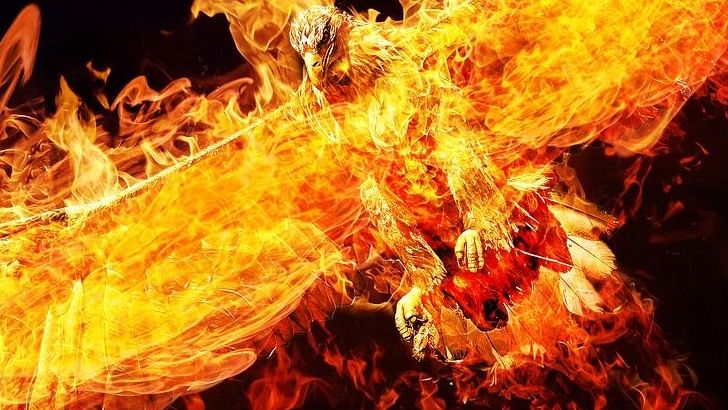The Art That Sparked a Revolution

When Shepard Fairey created the iconic “Hope” poster of Barack Obama in 2008, he probably didn’t realize he was designing one of the most powerful visual symbols of political change in modern American history. Street artist, graphic designer, and activist Shepard Fairey created this visionary portrait of then Senator Barack Obama in 2008 as a form of grassroots activism to support Obama’s first presidential campaign. The striking red, white, and blue image became more than just campaign art—it became a cultural phenomenon that embodied the transformative energy of an entire generation. By October 2008, Fairey and Sergant said they had printed 300,000 posters (with fewer than 2,000 sold and the rest given away or displayed). In addition, throughout the duration of the campaign, over 1,000,000 stickers were printed and disseminated by Stickerobot.com as well as clothing and other items with the image sold through Fairey’s website. The image’s massive distribution showed how a simple piece of art could mobilize people and create a movement. First disseminated as a street poster, the image was later used to create thousands of stickers and T-shirts and was widely circulated online.
The Historic Youth Surge of 2008

The numbers from 2008 tell a remarkable story of youth political awakening that had been brewing for years. This year, 66% of those under age 30 voted for Barack Obama making the disparity between young voters and other age groups larger than in any presidential election since exit polling began in 1972. The scale of youth engagement was unprecedented, with young people turning out in massive numbers compared to previous elections. In 2008, 51 percent of those under the age of 30 turned out to vote. This compares with a mere 40 percent youth turnout rate in 2000. Obama’s campaign tapped into something special about the millennial generation—they were hungry for change and ready to participate. The Millennial generation (the generation that came of age in the 21st century) is the best educated, most cosmopolitan, most tolerant, and most socially concerned generation in modern American history. Obama’s campaign tapped into this potential among the young, and the result was a surge in youth participation and his victory as the Democratic nominee for president.
The Digital Revolution That Changed Everything

What made Obama’s youth outreach truly revolutionary wasn’t just his message—it was how he delivered it. Barack Obama’s successful campaign for the presidency has been widely attributed to the use of social networking sites, mobile devices, and interactive websites to engage previously hard-to-reach populations in political activity. His team understood that young people lived online, and they met them where they were. During the 2008 presidential campaign, 14.5 million hours of Obama campaign-created videos were viewed on YouTube,16 a digital video sharing site popular with youth, in which the average age of a video uploader is 26.17 This advertising venue represented an estimated savings of $47 million over comparable television advertisements. The campaign didn’t just use technology—it pioneered new ways to blend digital organizing with traditional grassroots work. The Obama campaign both developed the new technologies of campaigning in the Internet era and merged these with the traditional grassroots campaigning of the past. The Howard Dean campaign began the former, but not with the success of the Obama campaign and without the fusion with traditional campaigning. Young volunteers didn’t just share content; they created their own, becoming active participants in spreading Obama’s message.
The Generational Divide That Defined a Decade

The 2008 election revealed a generational split that would come to define American politics for years to come. The age gap in voting, which began to open in the 2004 election and became a major factor in Barack Obama’s 2008 victory over John McCain, is not the political norm. In fact, for most of the past four decades, there was little difference in the voting preferences of younger and older Americans. This wasn’t just about young people preferring Obama—it represented a fundamental shift in how different generations viewed America’s future. Young voters are more diverse racially and ethnically than older voters and more secular in their religious orientation. These characteristics, as well as the climate in which they have come of age politically, incline them not only toward Democratic Party affiliation but also toward greater support of activist government, greater opposition to the war in Iraq, less social conservatism, and a greater willingness to describe themselves as liberal politically. The young voters weren’t just supporting a candidate—they were embracing a completely different vision of what government could and should do. Nearly seven-in-ten (69%) of voters ages 18-29 favor an expanded role for government, agreeing that it should do more to solve problems; fewer (27%) say the government is doing too many things better left to businesses and individuals.
The Staying Power of Youth Enthusiasm

Many political observers expected the youth energy around Obama to fade by 2012, but the numbers told a different story. In winning reelection, Barack Obama won 60% of the vote among those younger than 30. This year, 60% of those under 30 backed Obama, compared with just 48% of those 30 and older; in 2008, the gap was 16 points (66% of under 30 supported Obama vs. 50% of those 30 and older). Even though Obama’s support among young voters dropped slightly from his historic 2008 levels, the generational gap remained massive. President Obama won the majority of youth votes over Governor Romney by 60% to 37%, according to the early released National Exit Poll (NEP) conducted by Edison Research. That represented a somewhat narrower margin than in the 2008 election, in which Obama took 66% of young voters. What’s remarkable is that despite facing real-world challenges and economic hardships, young Americans stuck with Obama. In four swing states (Ohio, Virginia, Pennsylvania, and Florida), young voters were essential to the President’s victory. In those states, if Governor Romney had won half of the youth vote, or if young voters had stayed home entirely, then Romney would have won instead of Obama.
The Message That Resonated Across Cultures

Obama’s appeal to young people wasn’t limited to any single demographic—it crossed racial, ethnic, and cultural lines in unprecedented ways. One of the most striking features of young voters is their racial and ethnic diversity. Just 62% of voters age 18-29 identify as white, while 18% are black and 14% Hispanic. This diversity wasn’t just demographic—it represented a generation that saw America differently than their parents and grandparents. Among those ages 18-29, Obama took a majority among whites (54%-44%), and captured more than three-fourths of young Hispanic voters (76%-19%). The message of hope and change spoke to young people regardless of their background, creating a coalition that would reshape American politics. In 2013, for the first time, the majority of newborn babies in the U.S. were racial or ethnic minorities. The same year, a record-high 12% of newlyweds married someone of a different race. Young America was becoming more diverse, and Obama’s message of inclusion and possibility reflected the reality these young people were living.
Celebrity Culture Meets Political Engagement

Part of what made Obama’s appeal so powerful was his ability to blend serious politics with popular culture in a way that felt authentic to young people. Among a crowd that boasted “two incredibly famous recording artists, he a rapper and she a singer”—a barely veiled description of Jay-Z and Beyoncé—the Senator came off as every bit the celebrity he was. At the time, this seemed like a good thing. Obama understood that reaching young people meant speaking their language and appearing in their spaces. Plus, Obama had a sort of calculated cool that played well with younger supporters. He wasn’t trying to be something he wasn’t—he genuinely connected with youth culture while maintaining his gravitas as a leader. Despite the odds, the candidate felt potentially transformative to those increasingly flocking to his nascent campaign in a time of economic uncertainty, climate anxiety, and rising inequality. Young people saw in Obama not just a politician, but someone who understood their world and their concerns.
The Obama Foundation’s Continuing Legacy

Obama’s commitment to inspiring young leaders didn’t end when he left office—if anything, it intensified through the Obama Foundation. That’s why after leaving the White House, Michelle and I started the Obama Foundation, to inspire and empower and connect those of you who are going to be driving change for years to come. We now have a global network of hundreds of young leaders from practically every continent, who are tackling some of the most important issues of our time. The Foundation represents the institutionalization of Obama’s belief in young people’s power to create change. This year’s class comprises 33 Leaders from Africa, 35 from the Asia-Pacific, 36 from Europe, and 100 from the United States, 30 Scholars at the University of Chicago and Columbia University, and 100 new Voyagers. These Obama Leaders, Scholars, and Voyagers represent over 70 nations and territories, spanning a broad range of sectors—including public, private, and civil. The numbers show how Obama’s message of hope and empowerment has become a global movement. More than 140,000 women across 155 countries have educational and entrepreneurial opportunities, thanks to the 2023 Obama Leaders.
The Evolution of Hope in a Changing World

As Obama continues to engage with new generations, his message has evolved to address contemporary challenges while maintaining its core optimism. Learning to trust each other again, that’s a generational project. Which is why I’m so excited about the young people, some of whom you’ve already heard from today and who you will hear from in a moment, who are experimenting with different ways to do this. Obama recognizes that each generation faces unique challenges but maintains his faith in young people’s ability to solve problems. We have never needed you more than we need you today. As we speak, the world feels more unstable and more dangerous than it has in a very long time. Even in 2024, as the world faces new crises, Obama’s message remains focused on empowering the next generation. But as a citizen and part of a foundation that deeply believes in the promise of democracy—not only to recognize the dignity and worth of every individual, but to produce freer, fairer, and more just societies—I can’t think of a better time
The Ripple Effects in Modern Politics

The way Obama engaged young voters in 2008 created a template that politicians across the political spectrum have tried to replicate. Such notable instances are the online presence established by United States presidential candidates Bob Dole and Bill Clinton in 1996 (Jablonski, 2014). Subsequent years witnessed further integration of social media with Barack Obama leveraging social media for fund raising in 2008 and Donald Trump harnessing Twitter for increased popularity in 2018 (Yildirim, 2020). The techniques pioneered by Obama’s team—social media engagement, grassroots organizing, and youth-focused messaging—became standard practice. Certainly almost every political consultant sees the Obama campaign as a potential model for the future. The ability to raise funds from a large and diverse group of donors can transform the financial side of campaigning. However, the challenge has been replicating not just the methods, but the authentic connection that made Obama’s message so powerful.
The Contemporary Youth Political Landscape

Today’s young voters face challenges that would have been unimaginable to the millennials who first supported Obama in 2008. As a group, those tens of millions of young Americans face risks that older generations could scarcely imagine: extreme economic inequality, climate change and warp-speed technological change that is shaking political and economic stability in the U.S. and much of the world. Despite having more political power than ever before, many young people feel frustrated by the slow pace of change. But, the researchers found, dysfunctional government is leaving millennial and Gen Z voters fatalistic. Young voters from the millennial generation and Gen Z are emerging as the demographic center of power in American politics, but new studies by UC Berkeley researchers find they are fatalistic about critical problems such as economic inequality, climate change and the future of democracy. By some measures, millennials and Gen Z voters by 2028 will account for half of the electorate. The generation that Obama first inspired now has the numbers to drive real change, but they’re grappling with challenges that seem almost insurmountable.
The Enduring Power of “Yes We Can”

Perhaps the most lasting impact of Obama’s hopeful message has been its demonstration that ordinary people can create extraordinary change when they work together. What’s most striking when you revisit their remarks is that no matter the setting, the message is consistent: Ordinary people have a voice, and collectively hold the power to bring about change. That idea is core to our mission at the Obama Foundation and central to the story that will be told at the Obama Presidential Center. This wasn’t just campaign rhetoric—it was a fundamental belief that continues to guide Obama’s work today. As President Obama has said, the change we seek will take longer than one term or one presidency. Real change—big change—takes many years and requires each generation to embrace the obligations and opportunities that come with the title of Citizen. The message evolved from a campaign slogan to a philosophy of citizenship that emphasizes long-term engagement rather than short-term victories. The President’s farewell address, delivered in Chicago, looked back on his eight years and ended with his one last ask of the American people: “I’m asking you to believe. Not in my ability to bring about change—but in yours.”
The Complex Legacy in Today’s Political Climate

As America has experienced deep political divisions in recent years, some have questioned whether Obama’s hopeful message was naive or insufficient for today’s challenges. In the 1990s, Strauss and Howe expected those then-baby millennials “to become America’s next great generation.” Instead, they’ve been thwarted by economic and political instability for much of their adult lives, as “the nation’s one hopeful thing,” as described by Hammond in Great Expectations, showed them the practical limitations of hope. “I think people draw a very tight line between ‘We had Obama’ and then ‘We had Trump,'” Cunningham said. Yet this criticism may miss the deeper impact of Obama’s message—the way it fundamentally changed how young people see themselves as political actors. The so-called Obama coalition of voters — less politically engaged voters, younger voters and voters of color — is no more. In 2024, each of those groups shifted toward Trump in high numbers. While the electoral coalition may have shifted, the underlying belief in the power of grassroots organizing and youth engagement remains influential across the political spectrum.
The Global Resonance of Hope

Obama’s message didn’t just change American politics—it inspired young leaders around the world who saw in his success a model for their own countries. I’m thinking about leaders like Lumir Lapray, a community organizer in France who is training a network of rural changemakers in a country where extremism dominates many villages. Or Ayu Kartika Dewi, who started a program in Indonesia that sends children and their mentors to different parts of the country during school holidays to live with a family from a different cultural background. The Obama Foundation’s global reach demonstrates how the message of hope and empowerment transcends national boundaries. Beyond the United States, social media has left a mark on Africa politics with instances like a former Nigerian President’s use of Facebook to engage citizens; also civil society groups leveraging social media for election monitoring in Zambia (Chatora, 2012). Young leaders across the world have adapted Obama’s techniques of digital organizing and youth engagement to their own contexts, creating a global network of change-makers who trace their inspiration back to that hopeful message from 2008.
The young voters who first chanted “Yes We Can” in 2008 are now adults with families, careers, and responsibilities. They’ve seen the complexity of creating change in a polarized world, but many still carry that spark of hope that Obama ignited. As new generations face their own unprecedented challenges, the question remains: can hope still be a powerful force for change, or







